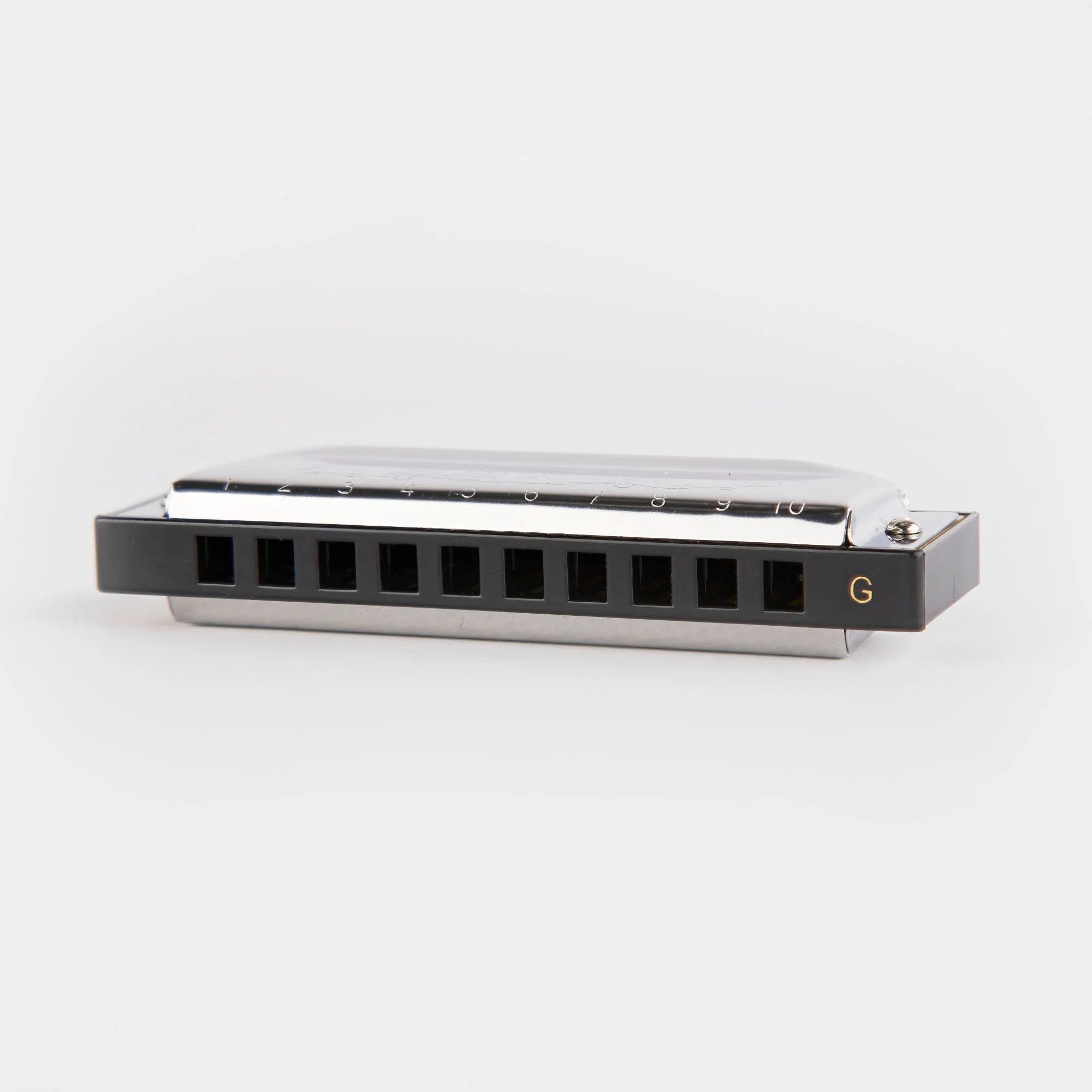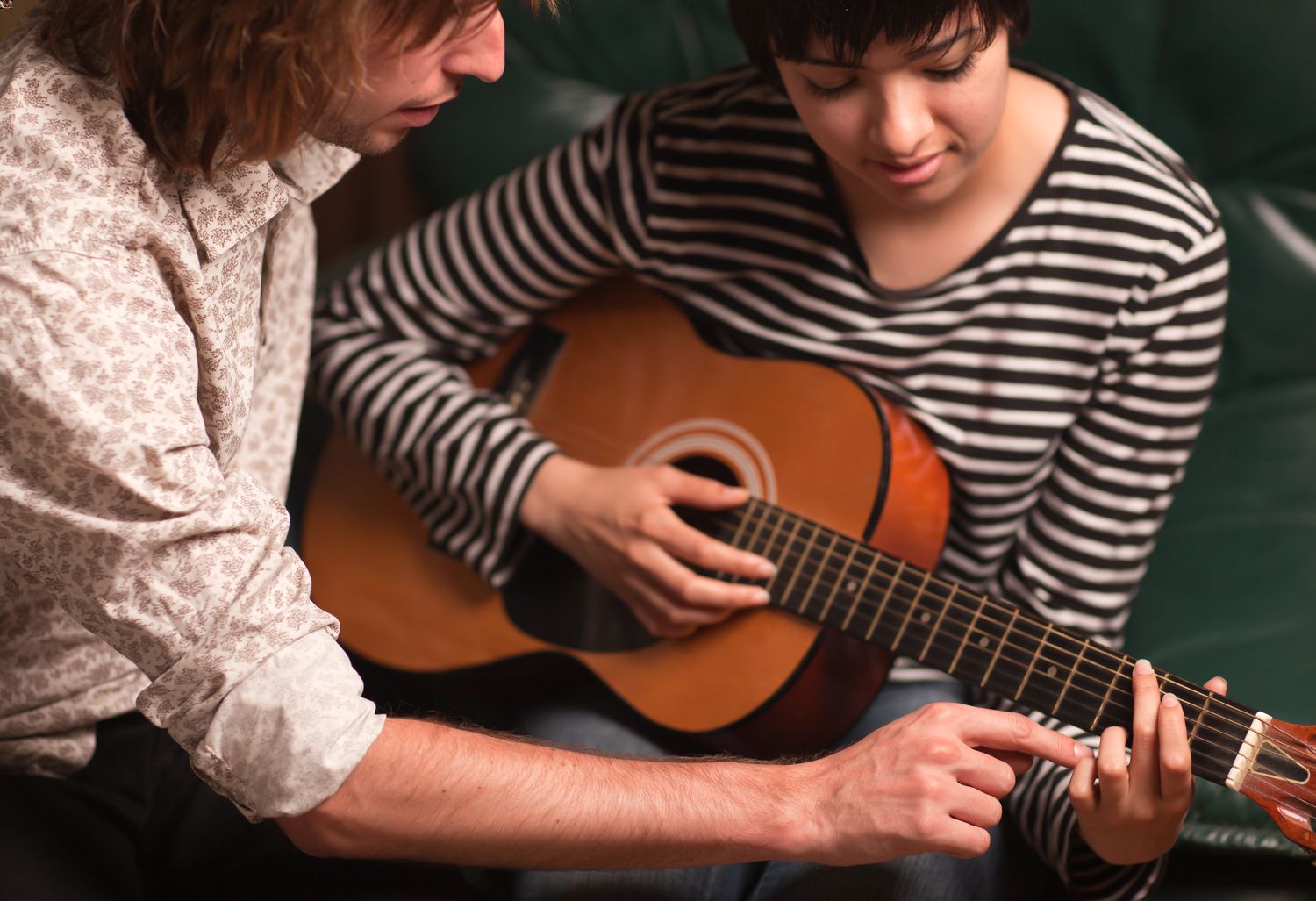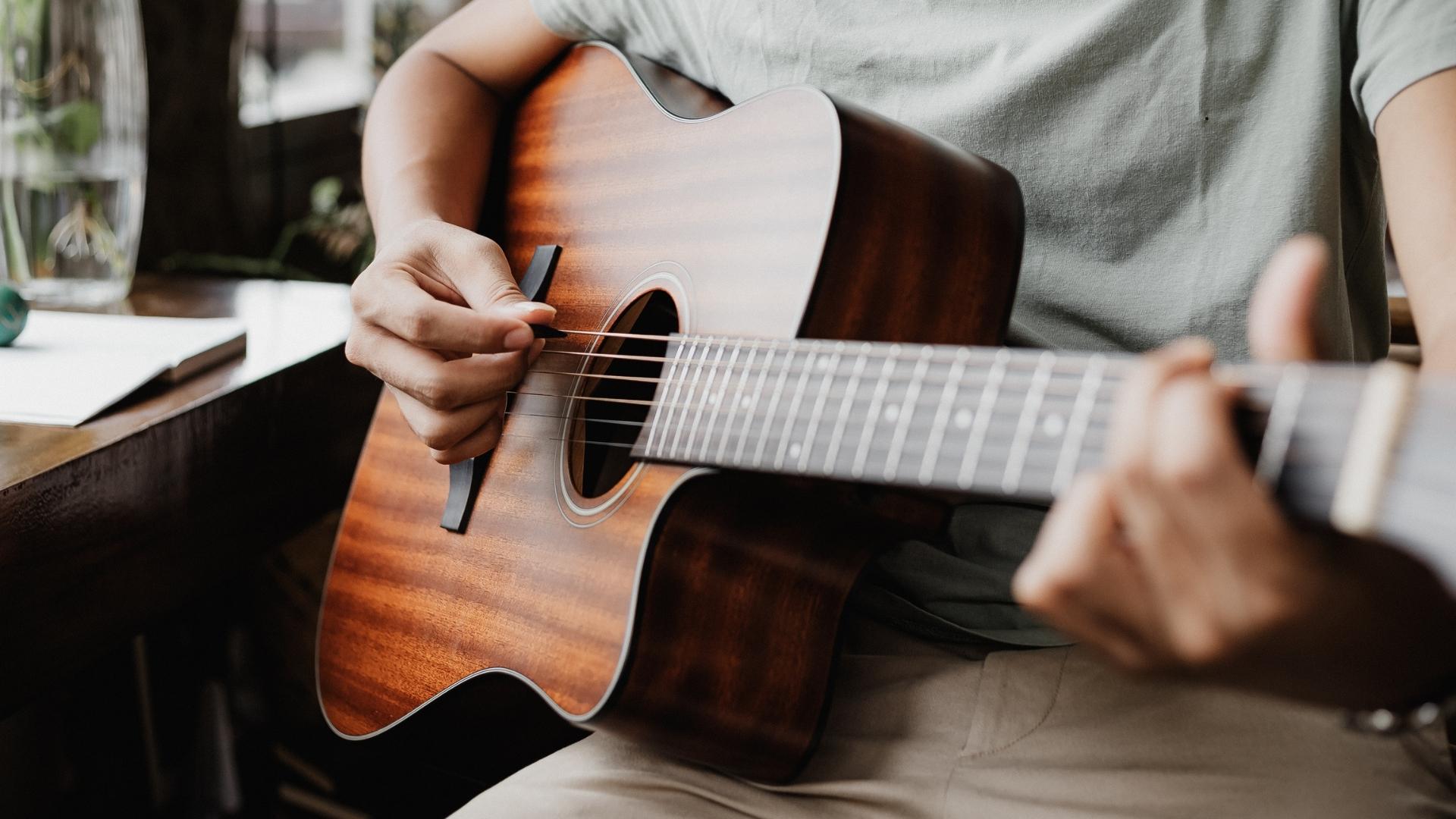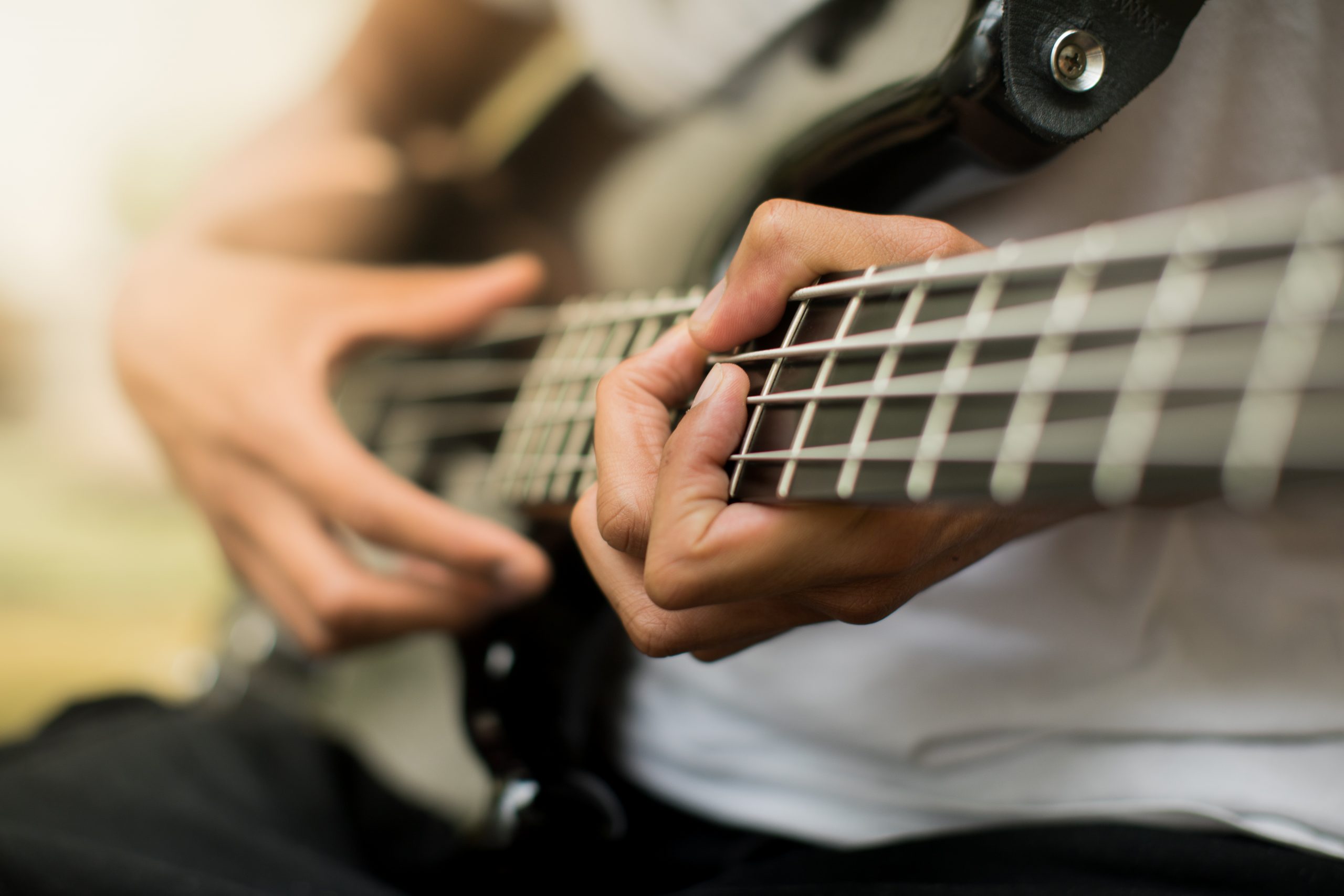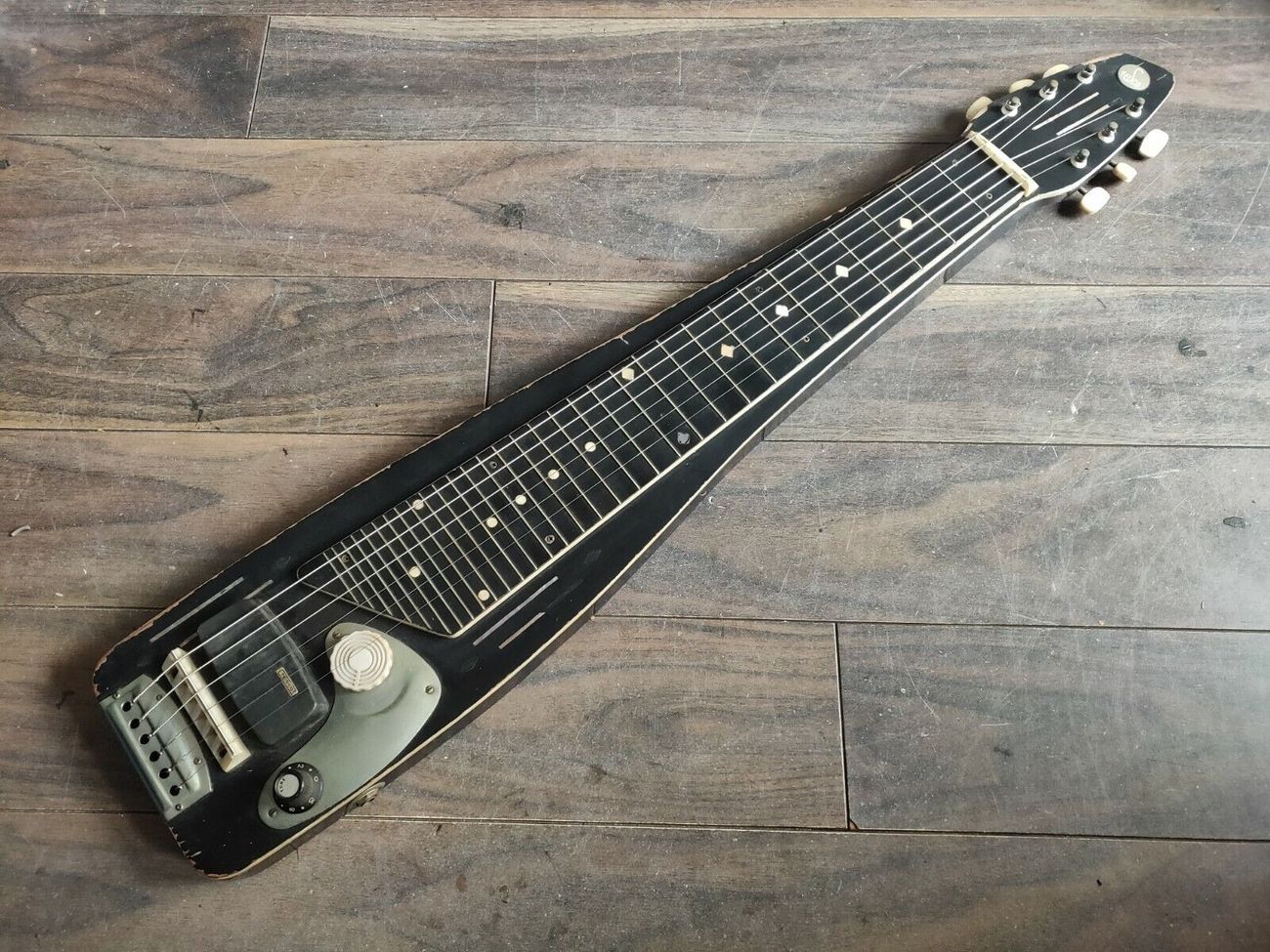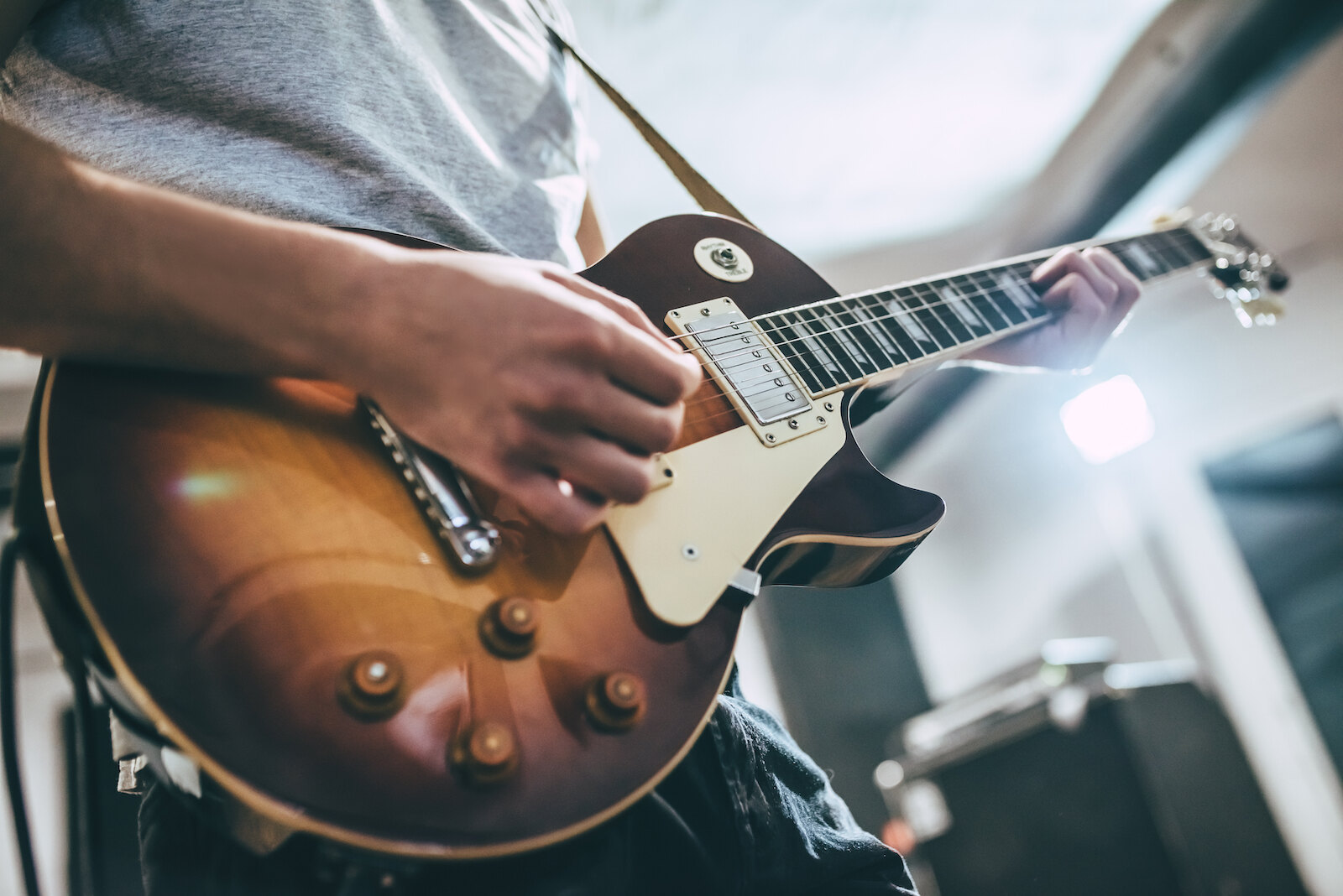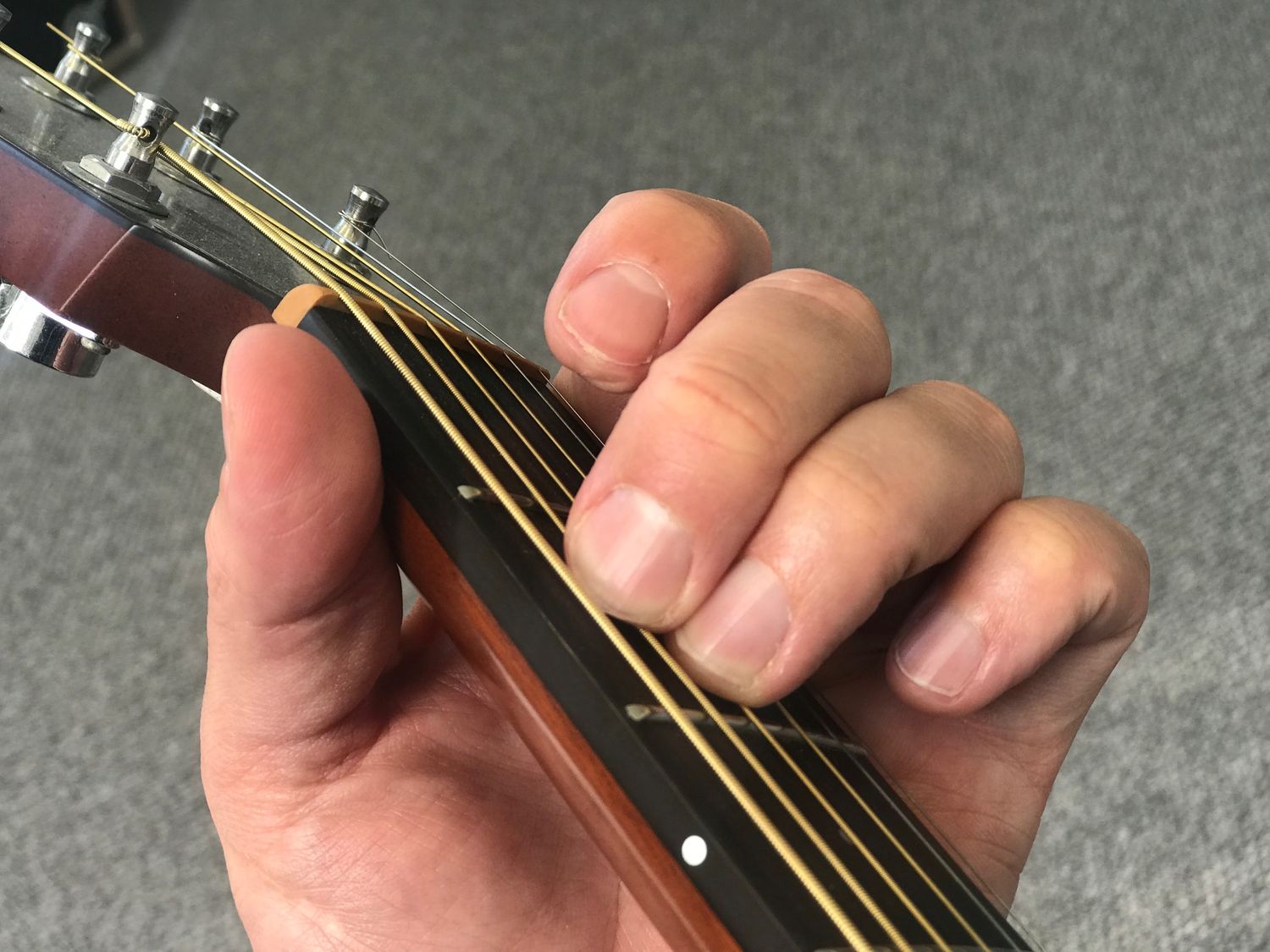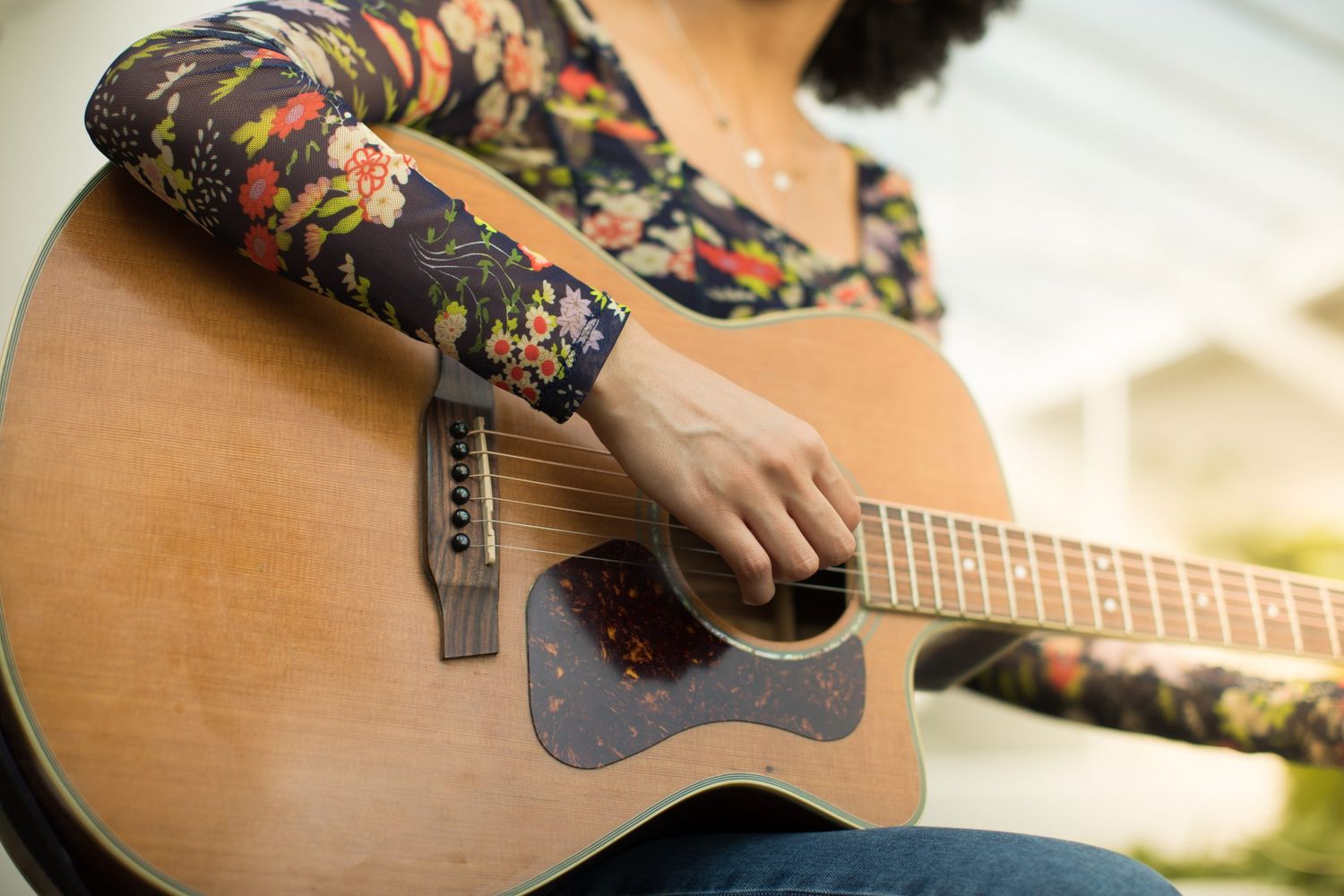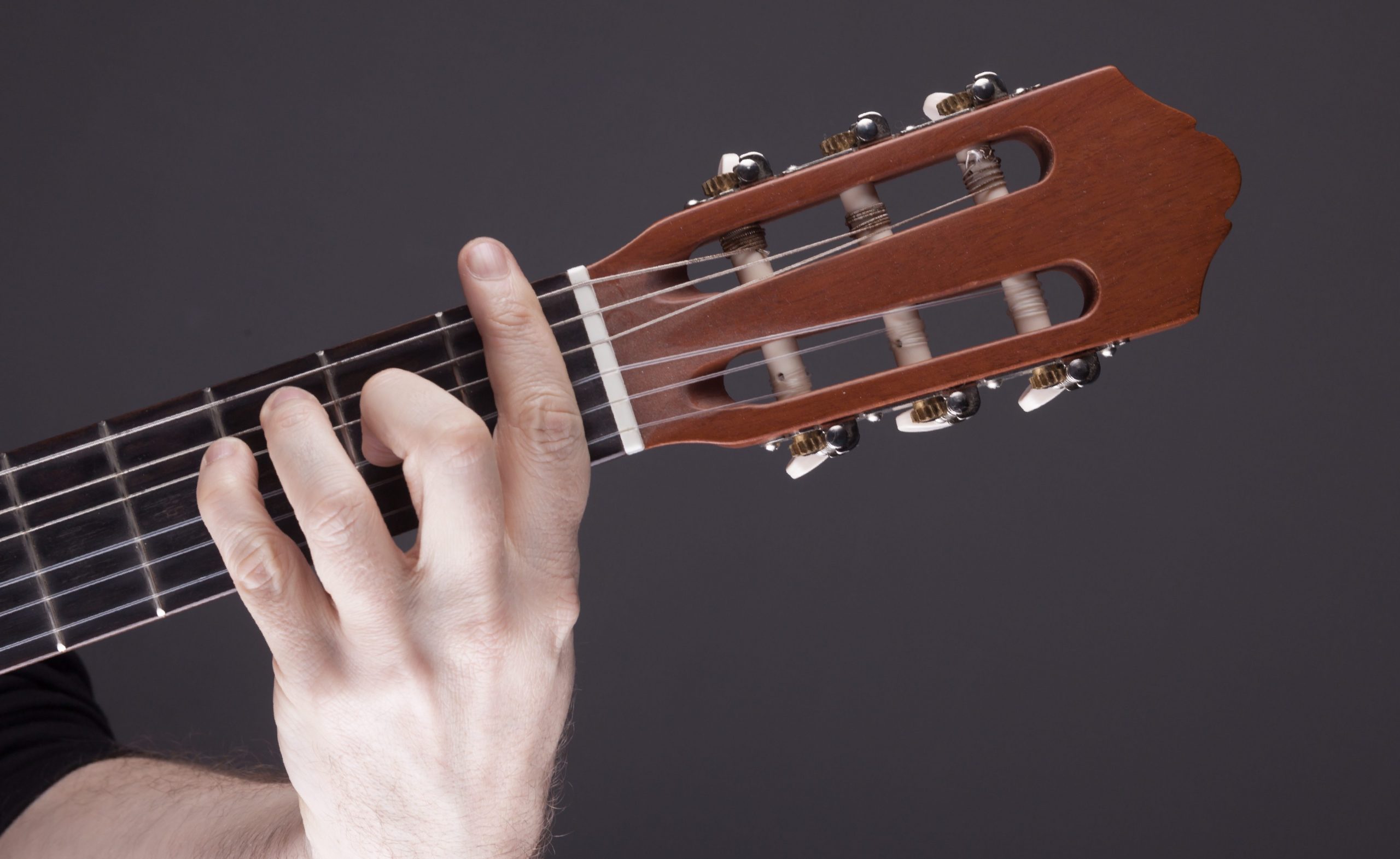Home>Instruments>Harmonica>How To Play Harmonica With Guitar


Harmonica
How To Play Harmonica With Guitar
Modified: March 11, 2024
Learn how to play harmonica alongside guitar with our step-by-step guide. Explore techniques, tips, and tricks to master the art of harmonica playing alongside your favorite instrument.
(Many of the links in this article redirect to a specific reviewed product. Your purchase of these products through affiliate links helps to generate commission for AudioLover.com, at no extra cost. Learn more)
Table of Contents
- Introduction
- Benefits of Playing Harmonica with Guitar
- Choosing the Right Harmonica
- Tuning Your Harmonica
- Holding the Harmonica
- Basic Harmonica Techniques
- Basic Guitar Techniques for Harmonica Players
- Playing Single Notes on Harmonica
- Playing Chords on Guitar
- Coordinating Harmonica and Guitar Playing
- Common Harmonica and Guitar Combinations
- Popular Songs to Play on Harmonica and Guitar
- Tips for Practicing Harmonica and Guitar Together
- Conclusion
Introduction
The harmonica, also known as the mouth organ or harp, is a versatile and captivating musical instrument. Its small size and portable nature make it a favorite among musicians, allowing them to create soulful melodies and catchy tunes wherever they go. Pairing the harmonica with the guitar takes the musical experience to another level, adding depth and richness to your performances.
In this article, we will explore the art of playing harmonica with the guitar. Whether you’re a beginner or an experienced musician, you’ll discover the benefits of combining these two instruments, as well as learn some essential techniques for harmonica and guitar coordination. So grab your harmonica and guitar, and let’s dive into the wonderful world of harmonica playing!
Playing the harmonica with the guitar offers a range of benefits. First and foremost, it opens up a whole new dimension to your musical expression. The harmonica adds a melodic and emotional element that complements the rhythm and chords of the guitar, allowing you to create a fuller and more dynamic sound.
Additionally, playing both instruments simultaneously can enhance your overall musicianship. It helps develop your multitasking skills, as you learn to coordinate your hands and breath control when playing the harmonica, while simultaneously strumming or picking the guitar strings. This coordination not only expands your technical abilities but also enhances your musical instincts and improvisational skills.
Furthermore, combining the harmonica with the guitar allows you to play a wider range of musical genres, from blues and folk to rock and country. Versatility is one of the harmonica’s greatest strengths, and when combined with the guitar, it becomes a powerful tool for exploring different musical styles.
So, whether you’re aiming to serenade a crowd with heartwarming folk tunes or rock the stage with energetic blues riffs, mastering the art of playing harmonica with the guitar will undoubtedly add an extra layer of charm and excitement to your performances.
Benefits of Playing Harmonica with Guitar
Playing the harmonica with the guitar offers a myriad of benefits for musicians of all levels. Here are some of the key advantages you can expect to experience:
- Enhanced Musical Expression: When you combine the harmonica with the guitar, you add a new dimension of melodic expression to your music. The harmonica’s soulful and expressive sound complements the rhythmic and harmonic elements of the guitar, allowing you to create a more dynamic and captivating musical experience.
- Expanded Musical Skills: Playing both the harmonica and guitar simultaneously requires coordination between your hands, breath control, and timing. This coordination not only enhances your multitasking abilities but also improves your overall musicianship. It helps you develop a stronger sense of rhythm, timing, and phrasing, enabling you to become a more well-rounded musician.
- Versatility in Musical Genres: One of the key advantages of combining the harmonica with the guitar is the ability to explore a wide variety of musical genres. Whether you’re interested in blues, folk, country, or even rock music, the harmonica and guitar combo allows you to adapt and create beautiful melodies in different styles. This versatility opens up new creative possibilities and expands your musical horizons.
- Improved Breath Control: Playing the harmonica requires proper breath control and technique. When you pair it with the guitar, you have the opportunity to further refine your breath control skills. Coordinating your breathing while playing the harmonica and strumming or plucking the guitar strings challenges and strengthens your lung capacity, control, and endurance.
- Dynamic Performances: Playing harmonica and guitar together adds texture, depth, and dynamics to your performances. You can seamlessly switch between playing rhythmic guitar chords and intricate harmonica melodies, creating moments of contrast and excitement. This dynamic interplay between the instruments captivates audiences and elevates your live performances to new heights.
By incorporating the harmonica with the guitar, you unlock a world of musical possibilities. It not only enhances your musical expression but also improves your technical skills and broadens your musical repertoire. So, whether you’re a beginner or an experienced musician, exploring the harmonica and guitar combination will undoubtedly enrich your musical journey.
Choosing the Right Harmonica
Choosing the right harmonica is essential to ensure a satisfying and enjoyable playing experience. Here are some factors to consider when selecting a harmonica:
- Key: Harmonicas are available in various keys, such as C, G, A, and D. The key determines the pitch and overall sound of the instrument. For beginners, it is recommended to start with a harmonica in the key of C, as it is versatile and widely used across different musical genres. As you advance, you can explore harmonicas in different keys to expand your musical repertoire.
- Type: There are two main types of harmonicas: diatonic and chromatic. The diatonic harmonica is the most common type and is suitable for most styles of music, especially blues and folk. Chromatic harmonicas, on the other hand, have a button that allows you to play all the notes, including sharps and flats. They are ideal for more complex and chromatic melodies.
- Quality: Invest in a harmonica from a reputable brand to ensure good quality and durability. Well-known brands like Hohner, Lee Oskar, and Seydel are renowned for their craftsmanship and produce harmonicas with excellent tone and responsiveness.
- Comfort: Consider the size and shape of the harmonica. Harmonicas come in different designs, including the traditional Richter tuning and the smaller, sleeker Marine Band Deluxe. Choose one that feels comfortable in your hands, allowing you to play for extended periods without strain.
- Budget: Harmonicas are available at varying price points. While it’s tempting to opt for cheaper options, investing in a higher-quality harmonica will yield better sound and responsiveness. Remember that a good harmonica can last for years with proper care and maintenance.
When choosing a harmonica, it’s also important to try it out if possible. Test the responsiveness and sound quality by playing different notes and bends. Pay attention to how easy it is to produce clear tones and execute bends and overblows. This hands-on approach will help you find a harmonica that feels comfortable and suits your playing style.
Lastly, remember to take care of your harmonica. Regular cleaning and maintenance, such as wiping it down after playing and storing it in a protective case, will ensure its longevity and optimal performance.
By carefully considering these factors and selecting the right harmonica, you’ll set yourself up for a rewarding musical journey with your harmonica and guitar duo.
Tuning Your Harmonica
Tuning your harmonica is essential to ensure that each note is in pitch and your instrument sounds harmonious with other musicians or backing tracks. Here are some steps to help you tune your harmonica:
- Start with a Tuning Reference: Obtain a reliable tuning reference, such as a piano, digital tuner, or tuning app. This will serve as a guide for adjusting the pitch of your harmonica.
- Tune the Blow Notes: Blow into each hole of the harmonica and compare the pitch to the reference. If a note is sharp (higher in pitch), gently push down on the reed to lower the pitch. If a note is flat (lower in pitch), use a small tool, such as a toothpick or a specialized reed adjustment tool, to lift the reed slightly and raise the pitch. Repeat this process for all the blow notes.
- Tune the Draw Notes: Draw (inhale) on each hole of the harmonica and adjust the pitch of the draw notes using the same method mentioned above. Remember to compare the pitch to the reference.
- Fine-tune Individual Reeds: If you notice that certain reeds still sound slightly out of tune, you can fine-tune them by gently adjusting the position of the reed plate. This requires careful and precise adjustments, so it’s advisable to consult a professional or experienced harmonica technician for this step.
- Check for Proper Airflow: After tuning, play all the notes on the harmonica to ensure that there is proper airflow and no obstructions or leaks. If you notice any issues, such as air leakage or blocked reeds, you may need to address these problems before proceeding.
Keep in mind that tuning a harmonica requires patience and practice. It is a delicate process that may take time to master. It is also important to remember that over-tuning or excessive adjustment of the reeds can lead to damage or reduced reed response, so proceed with caution.
If you are new to tuning harmonicas or unsure about making adjustments yourself, it is recommended to consult a professional harmonica tuner or technician. They have the expertise and specialized tools to tune harmonicas accurately and efficiently.
Tuning your harmonica ensures that it is in harmony with other instruments and allows you to play with confidence and accuracy. By taking the time to tune your harmonica properly, you can enjoy a balanced and harmonious sound when playing with your guitar or in any musical setting.
Holding the Harmonica
Properly holding the harmonica is crucial for achieving good tone, control, and ease of playing. Here are some guidelines to help you hold the harmonica correctly:
- Choose a Hand Position: Decide whether you prefer to hold the harmonica with your left hand or your right hand. This decision typically depends on your dominant hand or personal preference. Keep in mind that the hand holding the harmonica will be responsible for manipulating the notes and performing techniques.
- Cup the Harmonica: Hold the harmonica between your thumb and index finger, with the side containing the air holes facing your mouth. Your other fingers can wrap around the bottom of the harmonica for stability and support. Keep a relaxed and comfortable grip, allowing for flexibility and movement when playing.
- Create a Seal: Place your lips gently around the harmonica, covering the air holes completely. This creates an airtight seal, which is crucial for producing clear and resonant notes. Experiment with different lip positions and angles to find what feels most comfortable and allows for optimal breath control.
- Positioning the Harmonica: Depending on the style of music you’re playing, you may need to position the harmonica differently. For most styles, positioning the harmonica parallel to your mouth works well. However, for certain techniques like tongue-blocking or overblowing, angling the harmonica slightly upward or downward may be necessary.
- Find a Comfortable Gesture: As you hold the harmonica, find a relaxed and comfortable posture for your body and arms. This will allow for ease of movement and minimize strain or fatigue during long practice sessions or performances. Remember to maintain good posture and avoid excessive tension in your hands, shoulders, or neck.
It’s important to mention that everyone’s preferences and playing styles may vary. The guidelines provided here are general suggestions, but feel free to adapt and modify them to suit your needs and comfort.
As you develop your harmonica playing skills, you may also discover different techniques and hand positions that work best for you. Don’t be afraid to experiment and explore different holding techniques to find what feels most natural and allows you to play with control and precision.
By holding the harmonica correctly, you’ll have a solid foundation for playing various techniques and producing clear and expressive sounds. Practice regularly and continue to refine your hand position and grip for improved playing experience and musicality.
Basic Harmonica Techniques
Mastering basic harmonica techniques is essential for becoming a proficient player. These techniques will allow you to create various sounds, articulations, and effects on the harmonica. Here are some fundamental techniques to get you started:
- Single Notes: Playing single notes is the foundation of harmonica playing. To produce a single note, position your mouth over one hole of the harmonica and focus your breath on that specific hole. This technique requires precise control to avoid accidentally activating multiple holes and producing a chord-like sound.
- Bending: Bending notes is a technique that alters the pitch of a note by adjusting the shape of your mouth and controlling the airflow. With bending, you can create expressive and bluesy sounds. Start by practicing bending on the draw (inhale) notes, gradually working on bending the blow (exhale) notes as well.
- Vibrato: Vibrato adds depth and texture to your harmonica playing. It involves subtly varying the pitch of a sustained note by rapidly alternating between slightly bending and releasing the note. Experiment with different speeds and intensities of vibrato to find your preferred style.
- Tongue Blocking: Tongue blocking is a technique where you use your tongue to block certain holes while playing others. This technique allows for more precise control of individual notes, chords, and bends. By tongue blocking, you can produce unique articulations, melodic effects, and rhythmic techniques like tongue slaps.
- Train Whistle: The train whistle technique mimics the sound of a train whistle using the harmonica. To achieve this effect, blow forcefully into the harmonica and quickly slide your hand back and forth over the back of the harmonica, simulating the sound of a train whistle.
- Hand Effects: Hand effects involve manipulating the sound of the harmonica by cupping your hands around it. This technique can create a muffled or wah-wah effect, depending on the position of your hands. Experiment with different hand positions and movements to discover a range of unique sounds.
Remember to practice these techniques slowly and gradually increase your speed and accuracy. Focus on developing a clean and precise execution of each technique. Additionally, it’s important to listen to experienced harmonica players and study their techniques to further refine your own playing.
By mastering these basic harmonica techniques, you’ll be well on your way to creating a wide range of musical expressions and unlocking the true potential of your harmonica playing.
Basic Guitar Techniques for Harmonica Players
As a harmonica player, learning some basic guitar techniques can greatly enhance your ability to accompany yourself or other musicians while playing. Here are some essential guitar techniques for harmonica players:
- Strumming: Strumming is a basic guitar technique that involves running your fingers or a pick across the strings to create rhythm and chords. It is important to practice various strumming patterns, such as downstrokes, upstrokes, and combinations, to develop a solid sense of rhythm and timing.
- Chords: Familiarize yourself with basic guitar chords, such as major, minor, and dominant chords. Start by learning open chords, such as the C, G, and D chords, which are commonly used in many songs. As you progress, explore barre chords and more advanced chord voicings to expand your musical possibilities.
- Fingerpicking: Fingerpicking is a technique where you use your fingers to pluck individual strings, allowing you to create melodic patterns and intricate rhythms. Practice different fingerpicking patterns and exercises to improve your finger dexterity and coordination.
- Transposing: Transposing involves changing the key of a song to fit your harmonica’s key. Learn how to transpose chords on the guitar to match the key of the harmonica you’re playing. This skill allows you to play along with other musicians or recorded tracks without needing to change your harmonica.
- Rhythm Techniques: Explore various rhythm techniques, such as palm muting, percussive strumming, and rhythmic accents. These techniques add texture and dynamics to your guitar playing, enhancing your ability to provide a solid rhythmic foundation while playing harmonica.
- Playing Melodies: With practice, you can learn to play melodies on the guitar, allowing you to accompany yourself or take instrumental breaks during a performance. Start with simple melodies and gradually work your way up to more complex arrangements.
It’s important to approach learning these guitar techniques with patience and consistent practice. Start by focusing on mastering one technique at a time before moving on to the next. Take advantage of online resources, instructional books, or even consider taking lessons from a guitar instructor to accelerate your progress.
Remember to have fun and be creative while practicing these guitar techniques. Experiment with different chord progressions, strumming patterns, and fingerpicking styles to find your own unique musical voice as a harmonica player.
By integrating basic guitar techniques into your harmonica playing, you’ll be able to provide a solid musical accompaniment and expand your overall musical capabilities, opening up new possibilities for creative expression.
Playing Single Notes on Harmonica
Playing single notes on the harmonica is a fundamental technique that forms the basis of melodies, riffs, and solos. Mastering this technique is crucial for achieving a clean and precise sound. Here’s a step-by-step guide on playing single notes on the harmonica:
- Proper Mouth Position: Position the harmonica between your lips, covering the desired hole on the front side with your mouth. Ensure that your mouth covers only one hole at a time to produce a single note.
- Tongue Placement: Rest your tongue on the back of your bottom teeth, slightly raised to create a barrier between the holes adjacent to the one you want to play. This helps to prevent unintentional airflow through multiple holes.
- Differentiate Between Inhaling and Exhaling: Determine whether you want to inhale or exhale the air through the harmonica to produce the desired note. Inhaling produces a draw note, while exhaling produces a blow note. Start by practicing single notes using the draw and blow technique on different holes.
- Controlled Breath: Blow or draw gently and consistently, controlling the airflow to produce a clear and sustained single note. Avoid blowing too forcefully, as it may cause multiple reeds to vibrate, resulting in unwanted chords or distortion.
- Practice Changing Holes: Start by playing single notes on one hole and then practice moving to adjacent holes smoothly and accurately. This will enable you to play melodies, scales, and patterns across different notes on the harmonica.
- Refine Pitch Accuracy: Pay attention to the pitch of each note you play and make adjustments as needed. This can include subtle bending techniques to achieve precise pitch intervals.
- Listen and Analyze: Listen to professional harmonica players and study their techniques. Analyze their note articulation, vibrato, and tone to develop your own playing style and improve your single note technique.
Remember, playing single notes on the harmonica requires practice and patience. Focus on developing a clean and distinct sound for each note, and don’t be discouraged by initial challenges. Consistent practice will lead to improved technique and better control over the instrument.
As you become more comfortable with playing single notes, you can explore variations such as bends, overblows, and vibrato to further enhance your harmonica playing skills and create more expressive melodies.
Enjoy the process of mastering this fundamental technique, as it lays the foundation for more advanced harmonica playing and opens the door to a world of musical possibilities.
Playing Chords on Guitar
Playing chords on the guitar is an essential skill for any musician, and it complements harmonica playing beautifully. Chords provide the harmonic foundation for songs and allow you to accompany yourself or other musicians. Here’s a guide to help you get started with playing chords on the guitar:
- Learn Basic Open Chords: Start by learning essential open chords like C, G, D, E, A, and F. These chords are commonly used in a wide variety of songs and genres.
- Finger Placement: Place your fingers on the appropriate frets and strings to form each chord. Ensure that your fingertips are pressing down on the strings firmly enough to produce a clear sound, but be mindful not to block adjacent strings.
- Strumming Technique: Develop a strumming technique that allows you to play the desired rhythm. Experiment with different strumming patterns like downstrokes, upstrokes, and various combinations to match the feel and style of the song.
- Transition between Chords: Practice transitioning smoothly and quickly between different chords. Start with chord progressions that use only two chords and gradually work your way up to more complex progressions. Focus on maintaining a consistent rhythm while changing chords.
- Barre Chords: Once you’re comfortable with open chords, explore barre chords. Barre chords involve using one finger to press down multiple strings on the same fret. This technique allows you to play a wide range of chords up and down the neck of the guitar.
- Strumming Hand Coordination: Pay attention to your strumming hand while playing chords. Develop a sense of coordination between your strumming hand and fretting hand to ensure a smooth and synchronized sound.
- Explore Different Chord Voicings: Experiment with different voicings and variations of chords. For example, instead of playing a traditional open C chord, you can try a C barre chord or a C7 chord to add more color and variety to your harmonica and guitar playing.
Remember that practice and repetition are key to improving your chord playing skills on the guitar. Start slowly, focusing on accuracy and precision, and gradually increase your speed as you become more comfortable.
Listening to songs and identifying the chords being played can also greatly enhance your ability to transition between chords and develop a keen ear for harmony. Additionally, studying chord progressions in various songs will help you understand common chord sequences and how they can be applied to your harmonica and guitar playing.
Playing chords on the guitar provides a strong foundation for harmonica playing and allows you to accompany yourself or other musicians. With practice and dedication, you’ll be strumming along and adding beautiful chord progressions to your harmonica melodies in no time.
Coordinating Harmonica and Guitar Playing
Coordinating harmonica and guitar playing can create a harmonious and dynamic musical experience. Here are some tips to help you coordinate the two instruments effectively:
- Timing and Rhythm: Develop a strong sense of timing and rhythm by practicing with a metronome or playing along with backing tracks. Both instruments should be synchronized and aligned rhythmically to create a cohesive sound.
- Start Simple: Begin by playing simple melodies on the harmonica while strumming basic chords on the guitar. This allows you to focus on coordination without overwhelming yourself with complex techniques.
- Verse and Chorus: Differentiate between verses and choruses in a song by altering your playing between the harmonica and guitar. For example, you might play a harmonica melody during the verses and switch to strumming chords on the guitar during the choruses for a fuller sound.
- Call and Response: Create interesting musical dialogues by alternating between the harmonica and guitar. Play a phrase on one instrument and respond with a complementary phrase on the other. This technique adds depth and interaction to your playing.
- Dynamic Control: Vary the volume and intensity of your playing to add dynamics to the music. Use softer dynamics when playing more delicate melodies on the harmonica and increase the volume and intensity during guitar solos or sections that require more energy.
- Emphasize Different Registers: Explore the different registers of the harmonica and guitar to create variety in your playing. For example, when playing high notes on the harmonica, play lower register chords on the guitar, or vice versa. This creates a more balanced and layered sound.
- Practice Together: Set aside dedicated practice time to specifically focus on coordinating your harmonica and guitar playing. Start with simple songs or progressions, gradually working your way up to more complex arrangements.
- Listen and React: Pay attention to the dynamics and nuances of each instrument while playing with others. Adapt your playing to complement and support the overall sound. Listen to the guitar’s rhythm and adjust your harmonica playing to fit harmoniously within the musical context.
Remember, coordination between the harmonica and guitar is a skill that improves with practice and experience. Be patient and allow yourself time to develop a natural synchronicity between the two instruments.
Don’t be afraid to experiment and find your own unique style of incorporating harmonica and guitar playing. Embrace the opportunity to express yourself creatively and create a rich and captivating musical experience through the coordination of these two versatile instruments.
Common Harmonica and Guitar Combinations
The combination of harmonica and guitar is a classic pairing that has been used in various genres of music. Here are some common harmonica and guitar combinations that you can explore:
- Rhythm Harmonica, Strummed Guitar: In this combination, the harmonica player provides the rhythmic foundation with chordal accompaniment, while the guitarist strums chords to create a full-bodied sound. This combination is often found in folk, country, and acoustic blues music.
- Harmonica Melodies, Fingerpicked Guitar: When harmonica melodies are paired with fingerpicked guitar, it creates a captivating interplay of intricate melodies and arpeggiated chord patterns. This combination is commonly found in blues, folk, and singer-songwriter genres.
- Lead Harmonica, Rhythm Guitar: In this combination, the harmonica takes on the lead role, playing melodic solos and riffs, while the guitarist provides rhythmic support with strummed or picked chords. This combination is often heard in blues, rock, and Americana music.
- Harmonica Call and Response with Guitar: Call and response is a technique where the harmonica and guitar take turns playing contrasting musical phrases. This adds an interactive and dynamic element to the music, allowing the two instruments to engage in a musical conversation.
- Harmonica Over Guitar Chords: The harmonica player can play melodic lines or solos over sustained or arpeggiated guitar chords. This creates a harmonious blend of chords and melodic embellishments, adding depth and richness to the sound.
- Harmonica and Guitar Unison: Unison playing involves both the harmonica and guitar playing the same melody simultaneously. This creates a powerful and synchronized sound, reinforcing the melody and adding a sense of unity between the two instruments.
- Harmonica Effects with Guitar: The harmonica can be used to create various effects, such as wah-wah, tremolo, or pitch bending. When combined with the versatility of the guitar, it allows for a wide range of sonic possibilities and experimentation.
These are just a few examples of the many harmonica and guitar combinations you can explore. The key is to experiment, listen to different styles of music, and adapt these combinations to suit your musical preferences and playing style.
Remember, the harmonica and guitar have a unique synergy that allows for creative expression and adds depth to your musical performances. Embrace the power of this combination and let it inspire you to create captivating and memorable music.
Popular Songs to Play on Harmonica and Guitar
The combination of harmonica and guitar has been featured in numerous iconic songs across different genres. Here are some popular songs that lend themselves well to harmonica and guitar arrangements:
- “Heart of Gold” by Neil Young: This folk-rock classic features a harmonica solo that beautifully complements the acoustic guitar strumming. It’s a great song to showcase the harmonica’s ability to add warmth and soul to a melodic acoustic arrangement.
- “Blowin’ in the Wind” by Bob Dylan: With its simple chord progression and harmonica-driven melody, this timeless folk anthem is an excellent choice for harmonica and guitar duos. Emulate Dylan’s iconic harmonica solos while strumming the acoustic guitar chords.
- “Piano Man” by Billy Joel: This beloved ballad features a harmonica melody that represents the yearning and nostalgia present in the lyrics. Accompany the harmonica with the rhythmic strumming of the piano chords played on the guitar.
- “The Thrill is Gone” by B.B. King: This blues classic showcases the powerful combination of blues guitar and harmonica. Play the soulful guitar licks and complement them with expressive harmonica solos, capturing the emotional essence of the song.
- “Hoochie Coochie Man” by Muddy Waters: With its catchy guitar riffs and harmonica hooks, this blues standard provides an excellent opportunity to showcase the interplay between the two instruments. Experiment with call and response patterns and improvisation.
- “All Along the Watchtower” by Bob Dylan (Covered by Jimi Hendrix): This iconic rock song features a captivating guitar solo by Hendrix and a harmonica-driven melody. Capture the spirit of this song by recreating both the guitar and harmonica parts.
- “Rocket Man” by Elton John: Though known for its piano-driven sound, “Rocket Man” can be transformed into a beautiful harmonica and guitar arrangement. Play the memorable harmonica lines and strum the chords on the guitar, capturing the space-themed ambiance of the song.
- “Walking in Memphis” by Marc Cohn: This soulful pop song is often associated with its memorable harmonica riff. Create a rich harmonica and guitar arrangement by strumming the chords and layering the harmonica hook with expressive fills.
- “Roadhouse Blues” by The Doors: This blues-rock anthem features a driving guitar riff and a harmonica part that adds a layer of energy to the song. Capture the rawness of the original by combining the guitar riff and harmonica improvisation.
- “Jolene” by Dolly Parton: This country classic can be adapted to feature a harmonica solo alongside the guitar. Emphasize the heart-wrenching lyrics and capture the emotional essence of the song through the harmonica and guitar interplay.
These are just a few examples of popular songs that lend themselves well to harmonica and guitar arrangements. Feel free to explore songs from various genres and adapt them to suit your own musical style and preferences.
By playing these well-known songs on harmonica and guitar, you can showcase the unique and captivating bond between the two instruments while paying homage to the original artists who paved the way for this timeless combination.
Tips for Practicing Harmonica and Guitar Together
Practicing harmonica and guitar together requires focus, coordination, and dedication. Here are some tips to make your practice sessions more productive and enjoyable:
- Start with Individual Practice: Before practicing together, spend time separately on each instrument to work on foundational techniques, scales, chords, and repertoire. This will establish a solid foundation for harmonica and guitar playing, making joint practice sessions more effective.
- Choose Songs with Clear Structures: Select songs with clear and recognizable structures. This makes it easier to coordinate harmonica and guitar playing, especially during transitions between verses, choruses, and instrumental sections.
- Practice in Small Sections: Break songs down into smaller sections and practice them repeatedly. This allows you to focus on specific transitions, chord changes, and harmonica melodies, gradually piecing them together until you can perform the entire song smoothly.
- Coordinate Rhythm and Timing: Develop a strong sense of rhythm by using a metronome or backing tracks. Ensure that both the harmonica and guitar are in sync rhythmically to create a cohesive and tight sound. Start with slower tempos and gradually increase the speed as you improve.
- Learn to Listen: Pay attention to the dynamics, phrasing, and nuances of both instruments. Listen to the guitar’s strumming or picking patterns and the harmonica’s melodic lines. This helps you adapt and respond to each other’s playing, creating a harmonious blend.
- Experiment with Different Harmonica and Guitar Combinations: Explore different roles and techniques for each instrument. Experiment with playing harmonica melodies over sustained guitar chords, or harmonizing guitar riffs with complementary harmonica lines. Continuously explore and adjust the role of each instrument to find the most effective and pleasing combinations.
- Record and Assess: Record your practice sessions to objectively evaluate your performance. Listen back to identify areas that need improvement and work on them systematically. Celebrate your progress and track your development as you continue practicing harmonica and guitar together.
- Be Patient and Persistent: Coordinating harmonica and guitar playing takes time and effort. Be patient with yourself, as it may take a while to achieve a seamless and synchronized sound. Celebrate small victories along the way and stay persistent in your practice to reach your desired level of proficiency.
Remember, the key to successful practice sessions is consistency. Set aside dedicated time each day or week to practice harmonica and guitar together. Enjoy the process of learning and exploring new musical possibilities as you hone your skills as a harmonica and guitar duo.
Lastly, don’t forget to have fun! Experiment, explore different styles and genres, and let your creativity flow. Harmonica and guitar playing is a delightful and rewarding journey that allows you to express your musicality and captivate audiences with your unique blend of sounds.
Conclusion
Congratulations on embarking on the journey of playing harmonica and guitar together! The combination of these two instruments offers endless possibilities for creative expression and musical bliss. By following the tips and techniques discussed in this article, you can develop the coordination, skill, and musicality needed to create captivating harmonica and guitar arrangements.
From choosing the right harmonica and tuning it properly, to mastering basic techniques and coordinating harmonica and guitar playing, each step is crucial in building a solid foundation. Remember to practice regularly, be patient with yourself, and celebrate your progress along the way.
Explore popular songs and experiment with different styles and genres to find your own voice as a harmonica and guitar player. As you gain confidence and experience, don’t hesitate to add your own personal touches and innovations to your playing.
Whether you’re strumming chords on the guitar while blowing soulful melodies on the harmonica, or playing intricate harmonica riffs alongside fingerpicked guitar patterns, the harmonica and guitar duo has the power to captivate audiences and create a rich and dynamic musical experience. Embrace the challenge, enjoy the process, and let your musicality shine through this fulfilling musical journey.
So, grab your harmonica, strum your guitar, and let your harmonious collaboration begin. Let the harmonica and guitar blend their unique sounds, creating melodies that touch hearts and move souls. With dedication, practice, and passion, you’re well on your way to becoming an accomplished harmonica and guitar duo.

